
|
| The Simon Wiesenthal Center’s Research Department publishes special reports highlighting a range of topical subjects from anti-Semitism to online hate to extremism. For over a quarter of a century, as part of its Digital Terrorism and Hate Project, an annual interactive report is published highlighting the promotion of online extremism, hate and anti-Semitism. The project explores how the internet is used by extremists to promote their ideologies and recruit individuals, often on the cutting edge of digital advances. Reports are shared with law enforcement, educators, and elected officials.
For more information, and to report hate content online, please email ireport@wiesenthal.com.
To access the Digital Terrorism and Hate project, please visit www.digitalhate.net.
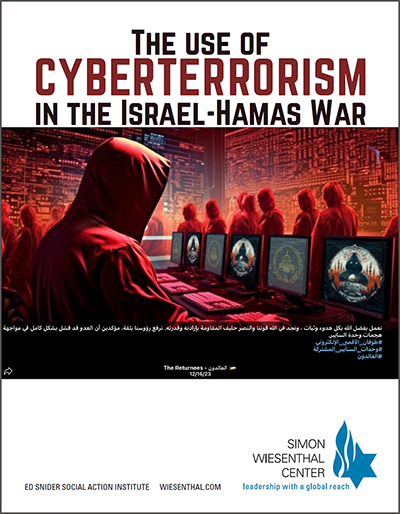 |
The Simon Wiesenthal Center's newest report from its Digital Terrorism & Hate experts is “The Use of Cyberterrorism in the Israel-Hamas War.”
Although most public, media and governmental attention has focused on the lethality, brutality, and scale of Hamas’ October 7th attack, far less attention has been given to the use of cyberterror as an enabling tactic in Hamas’ arsenal.
This report sheds light on this important component in the war between Israel and Hamas. The report details some of the mostly anonymous online activists who support Hamas as well as Russia & China.
Read report
Leer informe en español
|
| |
|
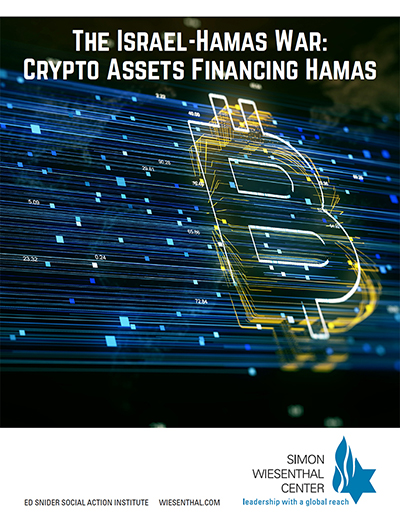 |
The Israel-Hamas War: Crypto Assets Financing Hamas
Hamas, an Iranian proxy and its affiliates, have been taking advantage of the October 7th massacre to engage in significant fundraising to finance and sustain the continuation of their terror operations in pursuit of their ultimate goal – the destruction of the State of Israel and the Jewish people.
As Hamas senior officials call for support, multiple fundraising and charity drives were, and continue to be, launched to solicit donations on social platforms through online payment services, cryptocurrency platforms, charities, and direct-deposit accounts at financial institutions.
Read report
|
| |
|
 |
Automating Palestinian Terror on Telegram
The Simon Wiesenthal Center’s latest report focuses specifically on one Palestinian terror Telegram group that has close to 1,800 subscribers.
Military advice is provided to the group, Qassami Mujahid and is a virtual repository providing military style, combat and on-demand advice and lessons on committing terrorist attacks, often specifically targeting Jews and Israelis.
This feed, unearthed by the Simon Wiesenthal Center Research Department, is one of many representing the interests of the Izz ad-Din al-Qassam Brigades, the military wing of Iran-proxy - Hamas, which has been designated as global terrorist entity.
The Simon Wiesenthal Center’s Digital Terrorism and Hate Project continually monitors the social media activities of more than 2,000 Palestinian groups and entities.
Read report
|
| |
|
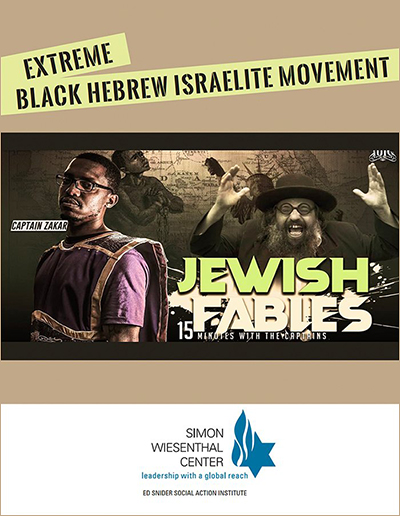 |
Extreme Black Hebrew Israelite Movement
The newest report from the Simon Wiesenthal Center’s Research Department presents an overview of a worldview, ideology, and rhetoric of extremist elements in the Black Hebrew Israelite movement that fans the flames of anti-Jewish hate and - like some white extremist movements - literally presents Jews as the devil incarnate, spawning targeted violence, mayhem and even murder of Jews.
The Simon Wiesenthal Center will continue to bolster its relationships and alliances with Black Americans, who in 2022, remain the #1 target of race-based hate crimes in the US and will continue to fight against #Antisemitism, bigotry, and racism, wherever the source and whoever the target
Read report
|
|
| |
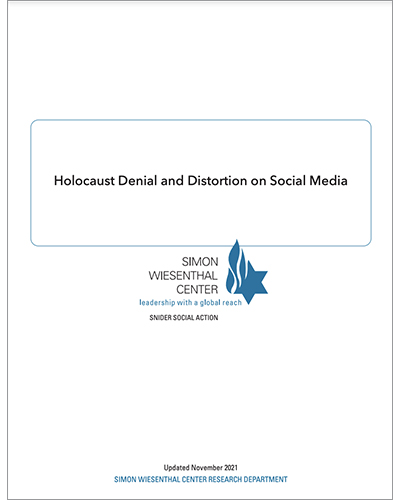 |
Holocaust Denial and Distortion on Social Media
On the occasion of the 83rd anniversary of Kristallnacht, the Simon Wiesenthal Center is highlighting how new platforms for Holocaust denial and distortion are reaching a far broader audience, more than ever before, while online content promoting Holocaust denial, distortion and relativization is spreading and growing rapidly.
This report introduces how such content is presented to users across a multitude of platforms, and the methods utilized by those who seek to disrupt, distort and destroy the memory of the victims of the Shoah while at the same time promoting anti-Semitism and hate.
Read report
|
|
|
|
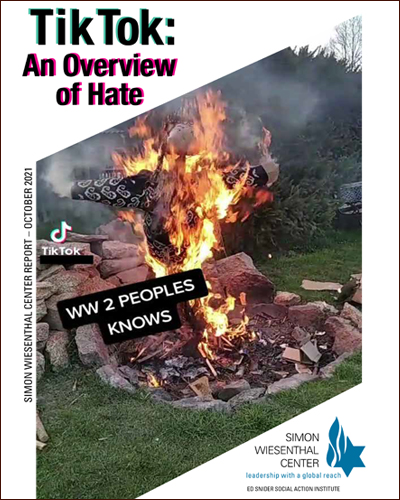
|
TikTok is one of the fastest growing social media platforms in the USA and internationally. This report provides an overview of how hateful and extremist material is proliferated on this platform, and how TikTok’s algorithm pushes users towards more extremist content.
Read report
View video
|
|
|
|
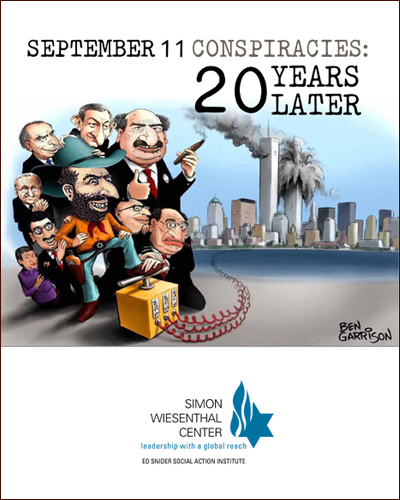
|
September 11 Conspiracies: 20 Years Later
“September 11 Conspiracies: 20 Years Later” graphically catalogues the misinformation and debunked 9/11 conspiracy theories that advance bigoted and prejudiced beliefs and ideologies, especially anti-Semitism. As this report attests, the internet was used to spread many of the key conspiracy theories immediately after 9/11 and continues to serve as a platform for these theories to fester and flourish.
Read report
|
|
|
 |
Combating History's Biggest Lie:
Holocaust Denial in the Twenty-First Century
Simon Wiesenthal said, “the history of man is the history of crime.” Holocaust Denial began not after World War II but during the War with the Nazi masterminds of the Holocaust themselves. Fearing what awaited them in defeat, they sought the total destruction of the documentary evidence of the regime’s crimes. Well before Hitler retreated into his Berlin bunker, his henchman tried to eradicate all proof of the “Final Solution,” even as they strove to complete the destruction of Europe’s Jews. SS Leader Heinrich Himmler instructed his concentration camp commandants to destroy all signs of mass extermination in the most audacious coverup attempt in the history of crimes.
Read report
|
|
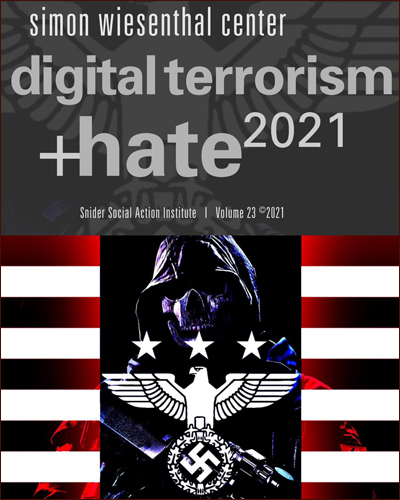 |
Digital Terrorism + Hate 2021
The SWC called on the Big-Five social media giants to refocus on degrading the marketing capabilities of bigots, anti-Semites and terrorists – foreign and domestic.
Not a single mainstream nor emerging social media platform earned an ‘A’ grade in this year’s assessment.
Among the “Big Five,” Facebook/Instagram, Twitter, and YouTube/Google have all received a “B-”; combined audience amounts to almost six billion users.
Other increasingly widespread platforms like Telegram and Parler have received a “D-“ and a “D,” respectively.
The worst grades have gone to the networking sites AnonUp, Gab, and 8Kun, as well as the video platform Brighteon, all of which receives “Fs.” These sites provide a full menu of social media options for extremists.
View Digital Terrorism + Hate 2021 here
|
|
|
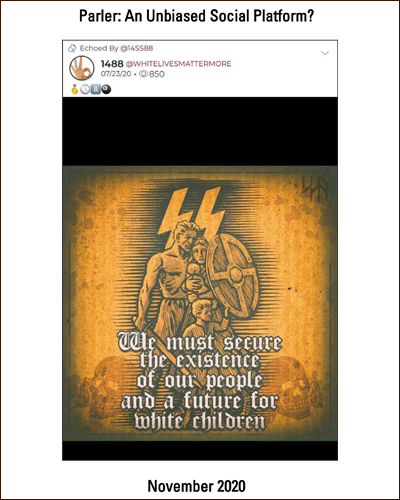
|
Parler is a social media platform that has quickly emerged as a growing and powerful alternative to Twitter and Facebook. Unfortunately, as this report shows, it has also attracted extremists who seek to use social media platforms to inject their hate into the mainstream of society.
Read report
|
|
|
| |
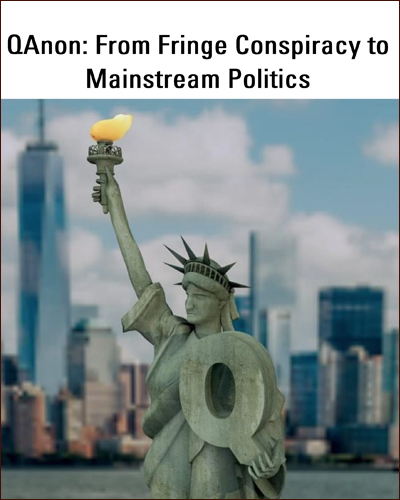
|
QAnon:
Fringe Conspiracy to Mainstream Politics
This report details the origins of QAnon; what about this conspiracy is new and how much support QAnon really has. The report also covers incidents sparked by QAnon, politicians who support it, and its future. Just as anti-Semitism and Jew-hatred have been around for thousands of years, “Qanon: From Fringe Conspiracy To Mainstream Politics” highlights the staying power of pernicious and lurid conspiracy theories spawned by fertile imaginations and nurtured by people’s fears.
Read report
|
|
|
|
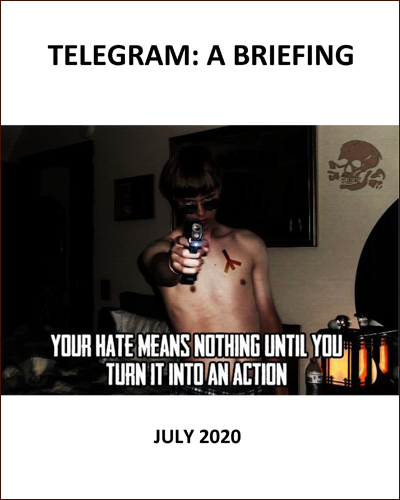
|
This report details the growing use of this social media platform by far-right extremists to promote hate and violence. SWC researchers, who regularly share information with the Department of Justice, Homeland Security, the FBI, and local law enforcement agencies, have found that far-right channels on Telegram glorify terrorist actors and movements, including murderers of Jews and Muslims at prayer. The report documents how this content leads to incitement and inspires lone wolf violence.
Read report
|
|
|
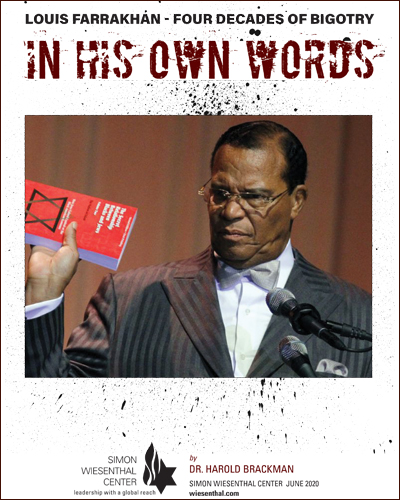
|
Louis Farrakhan - Four Decades of Bigotry
In His Own Words
This report was prepared amidst an unprecedented national reckoning about past and present racism. This reckoning was spurred on by protests in the streets of major US cities, charges that African Americans are victimized by systemic racism, and demands that whites acknowledge their unfair “white privilege.” Many prominent Americans, media and educational institutions, and corporations have begun to reflect publicly about their own biases and privileges.
Read report
|
|
|
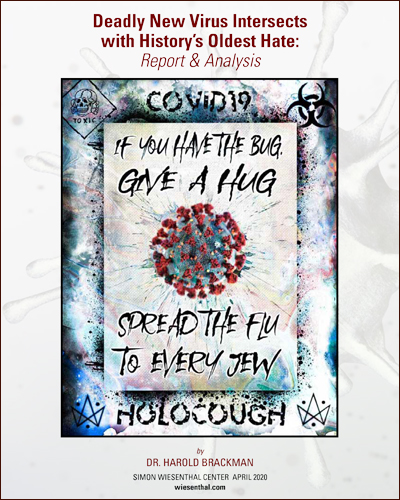 |
Deadly New Virus Intersects with History's Oldest Hate
By now everyone is painfully aware that the twenty-first century lacks immunity to not only contagious diseases but ancient ideological plagues like anti-Semitism. The current moment is particularly dangerous because of new efforts to harm Jews by exploiting well-founded concerns about the Coronavirus. This essay puts under the microscope current examples of the threatening conjunction of anxieties about this new virus with thousand-year-old prejudices demonizing Jews not just as Christ killers and Shylocks but as disease purveyors. COVID-19 is a novel virus, for which there is still no vaccine like that invented by Dr. Jonas Salk to end the scourge of polio; but the manipulation of such pandemics by anti-Semites has historical roots going back millennia. Our focus will be the highly-relevant history of what might be called “medicalized” anti-Semitism.
Read report
|
|
|
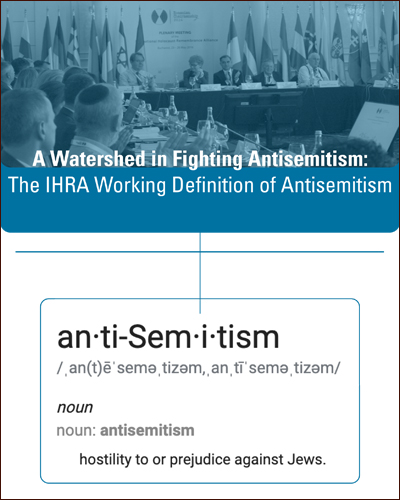 |
A Watershed in Fighting Antisemitism: The IHRA Working Definition of Antisemitism
The International Holocaust Remembrance Alliance (IHRA) Working Definition of Antisemitism has been described by US Special Envoy on Antisemitism Elan Carr as a “watershed” in the fight against antisemitism. Outside of the 34 member nations of IHRA it has been further adopted or endorsed by over 25 countries and international organizations such as the UN. In the US it is used by the State Department, Department of Education and served as the basis of President Trump’s Executive Order on Antisemitism. In this report, former Wiesenthal Center Director of Government Affairs, Mark Weitzman who introduced and steered the Working Definition to adoption, describes what this essential tool is, how it came into prominence and what its impact has been.
Read report
|
|
|
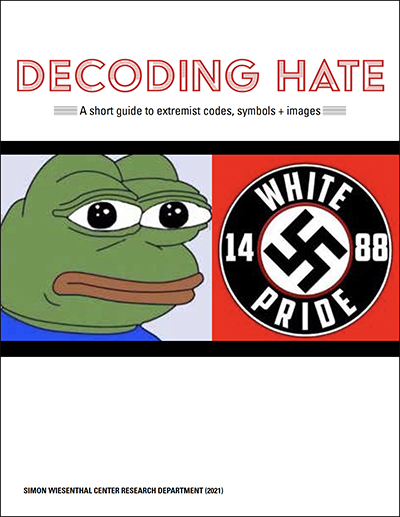 |
Decoding Hate: A short guide to extremist codes, symbols + images
Extremists have long utilized codes and symbols to spread their messages to followers. Often these codes are used in place of language and images that might draw more negative attention from mainstream audiences. The codes, symbols and images below have become popular on social media to promote extremist beliefs or ideologies. They can be found as images, emojis, usernames, profile pictures and more. Sometimes the codes and symbols are used by young people (and others) without full understanding the implication behind the content, or can be misinterpreted without the relevant context.
This short guide serves as a brief introduction to building better comprehension of the hateful origins and implications of this material.
Read report |
|
|


















